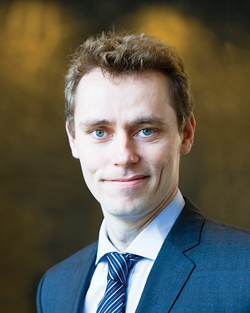|
World Oil: The Norwegian presence at OTC this year seemed greater. Was this by design, and if so, what was the reason?
Ola Borten Moe: Yes, it was at a higher level this year, to take advantage of greater OTC attendance and hopefully expose more industry professionals to Norwegian companies and products. I believe that we accomplished this goal.
WO: What are your priorities for Norwegian oil and gas over the next three years?
Moe: Our first priority is to maximize the resource base and get the most out of the Norwegian Continental Shelf (NCS) that we can. This is of big importance to Norwegian society, because, for each percent of increase in oil output achieved, the gain is 570 million bbl of oil.
Our second priority is prudent resource management. We must continue to develop our oil and gas industry, both home and abroad. On the home front, the northern parts of Norway are experiencing optimism, in terms of new finds, and there is increased activity, that we hope will bring greater prosperity to this part of the country. We must also continue developing the Norwegian oil and gas presence internationally.
When I say prudent resource management, I include prudent resource usage and greater efficiency of operations. It is happening all the time, but we need to keep it on the table as a goal.
WO: What are the current Norwegian oil and gas production rates?
Moe: Currently, we produce around 3 MMboed of oil and natural gas, combined. Roughly 1.8 MMbpd to 1.9 MMbpd is oil, and the rest of that figure is comprised of gas. We have worked hard over the last few years to maintain our production rate, and we will continue work hard. We will have to manage our fields even better.
WO: With those numbers in mind, what is the current oil recovery rate across Norway?
Moe: Right now, our average is 46%, but there are huge differences in the recovery rate among various fields. For instance, the recovery rate from Ekofisk is now expected to be above 50% (up from 17% in the PDO), and you will find several other large fields at 60%. But those are the best performers. Nevertheless, our goal is to increase the recovery rate of other operations to at least 60%, so that, nationwide, the average becomes 60%.
WO: In which areas offshore Norway do you see exploration possibly increasing?
Moe: You will see us open up a larger part of the Barents Sea this year. When we announce the awards for the 22nd Licensing Round on the Norwegian Continental Shelf in June, this month, you will see a bigger commitment to the Barents Sea. This round announced 86 blocks or parts of blocks, of which 72 are in the Barents Sea and 14 are in the Norwegian Sea. When the application deadline for the 22nd Round expired on Dec. 4, a total of 36 companies had submitted applications. We have received applications for both the Barents Sea and the Norwegian Sea. The interest is obviously, greatest in the Barents Sea. As our NPD exploration director, Sissel Erikson, said last December, it is no great surprise that several companies applied for production licenses in the Barents Sea. Statoil’s discovery of oil and gas on the Skrugard prospect has caused the interest level among producers in exploring the Barents Sea to rise sharply.
WO: What development projects are underway, offshore Norway?
Moe: Six plans for development and operation (PDOs) were approved in 2012, four in the North Sea and two in the Norwegian Sea. One of the approved North Sea developments is Total’s Martin Linge field (formerly Hild), where the HPHT reservoirs contain gas, and oil has also been proven. The plan is to develop the field with a permanent production facility. Lundin’s Edvard Grieg field (formerly Luno) has also been approved for a permanent facility that will handle final processing of production from Ivar Aasen.
Three plans involving subsea development have been approved, including Marathon’s Bøyla, which will be tied to Alvheim, Statoil’s Svalin, which will be tied to Grane, and DNO’s Jette, which will tie to Jotun. The latter plan was submitted in 2011.
In the Norwegian Sea, Statoil’s Skuld field was approved. The field will produce oil from three subsea templates tied to the Norne vessel. The plan for seabed compression on the Statoil-operated Åsgard field was approved in March 2012. Compressors will be installed on the seabed to increase production from Mikkel and Midgard fields. A PDO was also submitted for the Aasta Hansteen gas and condensate discovery, about 140 km north of Norne field.
Another eight fields are being developed under PDOs approved before 2012. We think producers will submit another 20 PDOs over the next two years. Of these, ten may come in the North Sea. Ekofisk is still the leading development of all time.
WO: What is the investment level in Norway for oil and gas? Will it increase?
Moe: I think that we have approximately $35 billion, annually, being spent on projects offshore Norway. It has been increasing over the past few years. I think that we will see a continued increase for the next few years. 
|



